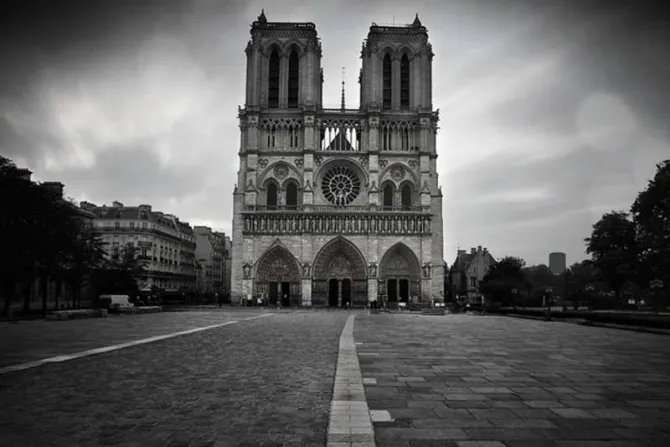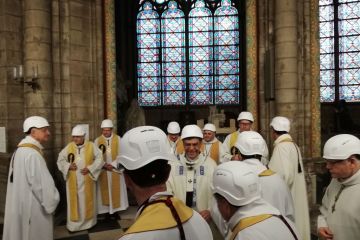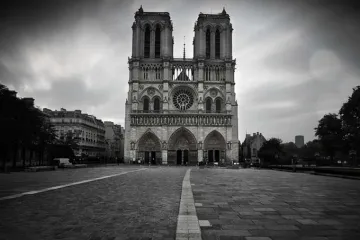Paris, France, Jul 17, 2019 / 11:45 am
France's Parliament on Tuesday passed a bill on the rebuilding of Notre-Dame Cathedral- three months after a fire destroyed the church's roof- even amid disagreement on the best way to proceed with the restoration.
The April 15 fire destroyed the wooden roof of the cathedral as well as a spire that was added to the 800-year-old church during a 19th century renovation.
The bill establishes a legal framework for the distribution of funds donated for the cathedral's renovation.
The French Senate first approved the bill May 27, which at the time mandated that the rebuilding be faithful to Notre-Dame's "last known visual state."
Yesterday's bill passed the National Assembly by a 99-8-33 vote. The architectural form of the reconstruction is not directly addressed in the text of the new law, AFP reports.
The government of President Emmanuel Macron had previously initiated an architectural competition to submit a variety of suggestions for the restoration; Macron has also called for "an inventive reconstruction" of the cathedral with a more contemporary design.
Macron has said that he intends the restoration to take five years. Critics in parliament reportedly complained that the project was being rushed in order to have the construction finished in time for Paris' 2024 hosting of the Olympic Games.
"The hardest thing is now ahead of us. We need to strengthen the cathedral for ever and then restore it," Culture Minister Franck Riester said as the bill was passed, as reported by AFP.
The bill also aims to organize the nearly $1 billion in donations that poured in from throughout the world to rebuild the cathedral. French luxury goods rivals, the billionaires Bernard Arnault and Francois-Henri Pinault, pledged 200 and 100 million euros apiece, AFP says.
Officials had been in the process of a massive fundraising effort to renovate the cathedral against centuries of decay, pollution, and an inundation of visitors. French conservationists and the archdiocese announced in 2017 that the renovations needed for the building's structural integrity could cost as much as $112 million to complete.
A recent New York Times analysis has also suggested that the cathedral came very close to completely collapsing, and that the brave actions of Paris' fire department likely saved the building from further damage. The arched stone vault is still at particular risk of collapse, and tourists are not yet allowed inside.
The Times report also detailed a miscommunication between a security guard and an employee monitoring the building's fire alarm, which meant the fire was not discovered until it had already been burning for 30 minutes.
The area around Notre-Dame still contains higher than normal amounts of lead, due to the collapse of the lead and oak spire, a source of concern for Paris authorities. Workers are currently working to clear debris from the site and have not started renovations.
Due to France's laws regarding secularization, the French government owns all churches built before 1905, including Notre-Dame. The government lets the Archdiocese of Paris use the building for free, and will continue to do so in perpetuity. The Archdiocese of Paris is responsible for the upkeep of the church, as well as for paying employees.
During Mass on June 15 in a side chapel, the cathedral's first since the fire, Archbishop Michel Aupetit emphasized that the church is no mere cultural heritage of France, but is meant for the worship of God.
About 30 people assisted in the Mass, including canons of the cathedral and other priests, wearing hard hats for safety. The Mass was said in Notre-Dame des Sept Douleurs, a side chapel that housed the crown of thorns, a relic which a fireman rescued from the blaze along with the Blessed Sacrament.




